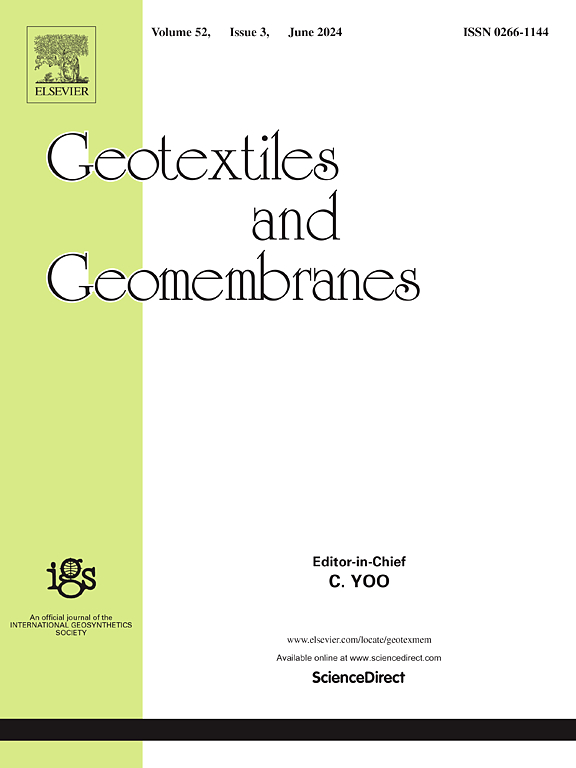Optimal design and application of geogrid for ballasted track stabilization in high-speed railways
IF 6.2
1区 工程技术
Q1 ENGINEERING, GEOLOGICAL
引用次数: 0
Abstract
This study investigates the optimal design parameters and installation location for geogrid stabilization in ballasted tracks under high-speed train loads. By integrating discrete element simulations with full-scale model tests, the performance of ballasted tracks was evaluated across various geogrid aperture sizes, stiffnesses, and installation locations. Multiple ballast gradations and trackbed compaction levels were also analyzed to ensure the generality of the results. The discrete element simulations indicate that a geogrid with an aperture size-to-median ballast gravel size ratio of 0.83 and a stiffness of approximately 2.3 kN/m is most effective in minimizing trackbed settlement. Furthermore, installing the geogrid immediately above the subballast surface provides the greatest constraints on ballast displacement and rotation, while most effectively reducing trackbed settlement. Full-scale model tests involving millions of wheel-axle load cycles at moving speeds of up to 360 km/h and axle loads of up to 25 t corroborate these findings, confirming the reliability and practical applicability of the optimal geogrid parameters and installation locations identified through discrete element simulations. This research offers evidence-based guidelines for optimal design of geogrid-stabilized ballasted tracks under practical railway service conditions, thereby extending maintenance intervals and improving long-term performance.
高速铁路有碴轨道稳定土工格栅优化设计与应用
研究了高速列车荷载作用下有砟轨道土工格栅稳定的最佳设计参数和安装位置。通过将离散单元模拟与全尺寸模型试验相结合,在不同的土工格栅孔径大小、刚度和安装位置下,对有碴轨道的性能进行了评估。为了确保结果的通用性,还分析了多个压载物级配和履带压实水平。离散单元模拟结果表明,孔径尺寸与道砟砾石中位尺寸比为0.83、刚度约为2.3 kN/m的土工格栅最有效地减小了履带沉降。此外,将土工格栅直接安装在压载物表面上方,可以最大限度地限制压载物的位移和旋转,同时最有效地减少履带沉降。在高达360公里/小时的移动速度和高达25吨的轴载荷下,进行了数百万轮轴载荷循环的全尺寸模型测试,证实了这些发现,证实了通过离散单元模拟确定的最佳土工格栅参数和安装位置的可靠性和实用性。该研究为实际铁路服务条件下土工格栅稳定有碴轨道的优化设计提供了循证指导,从而延长了维护间隔,提高了长期性能。
本文章由计算机程序翻译,如有差异,请以英文原文为准。
求助全文
约1分钟内获得全文
求助全文
来源期刊

Geotextiles and Geomembranes
地学-地球科学综合
CiteScore
9.50
自引率
21.20%
发文量
111
审稿时长
59 days
期刊介绍:
The range of products and their applications has expanded rapidly over the last decade with geotextiles and geomembranes being specified world wide. This rapid growth is paralleled by a virtual explosion of technology. Current reference books and even manufacturers' sponsored publications tend to date very quickly and the need for a vehicle to bring together and discuss the growing body of technology now available has become evident.
Geotextiles and Geomembranes fills this need and provides a forum for the dissemination of information amongst research workers, designers, users and manufacturers. By providing a growing fund of information the journal increases general awareness, prompts further research and assists in the establishment of international codes and regulations.
 求助内容:
求助内容: 应助结果提醒方式:
应助结果提醒方式:


